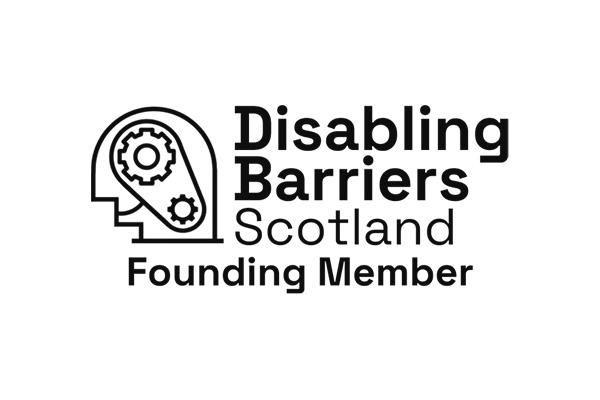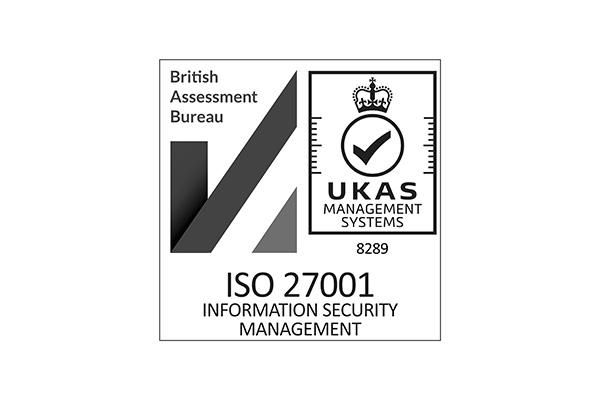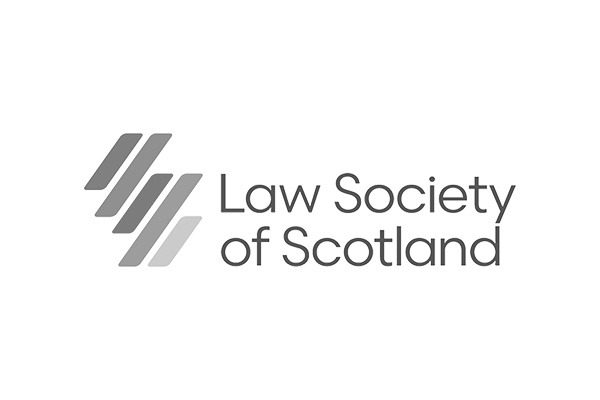
Contributors: Elaine Brailsford, Gillian Carty, Hamish Patrick
Date published: 24 December 2024
Enforcing security in Scotland
Introduction
As a starting point, it is worth mentioning that the methods of taking security over property in Scotland and England are different. Scots law does not recognise the concept of an equitable charge and does not distinguish between a mortgage and a charge. There is no sub-categorisation into legal or equitable mortgages and fixed charges.
While in England, legal and equitable mortgages and charges can, in principle, be granted over all property, different types of security are used in Scotland to secure different types of property. For example, the only competent ways in which shares in a Scottish Company can be secured are by way of pledge or floating charge. Generally in Scotland different types of security are not created in a single document and there is no Scottish form of debenture or general security agreement.
The most common forms of security used in Scotland for commercial transactions are a standard security, a floating charge and a share pledge and we discuss each in turn.
This note sets out the practical steps to be taken to enforce the most common forms of commercial security in Scotland and the effects of such enforcement. Additional rules apply in the case of security granted by individuals or over residential property. These rules are outwith the scope of this note, which reflects the law as at April 2015.
Standard security
The only way in which a fixed security may be taken over land, buildings and associated rights in Scotland is by a Standard Security. A Standard Security cannot secure moveable property (chattels) or intangible rights where additional and separate security would be required.
Standard Securities are a creation of statute which specifies the rights and liabilities of the parties.
Statute provides that the terms of a Standard Security are to be in conformity with specified statutory forms. To be effective the Standard Security must contain a proper description of the property to be secured and be registered in the Registers of Scotland. In the event that a Standard Security is not perfected in this way, it has no effect as a security. Additional considerations apply in the event that the property concerned is let and/or is subject to securities in favour of third parties.
Enforcement
The primary means of enforcement of a Standard Security is the service of a particular form of notice: a ‘calling-up notice’. Alternative procedures can be adopted should the aim of the creditor be to require the debtor to resolve an issue (such as an outstanding repair). The remedies of entering into possession and selling the property can only be exercised in the case of a financial breach if the calling up procedure is followed.
There is a specified form of calling-up notice which has to be served on the person last holding legal title to the secured property and appearing on the Land Register as the proprietor, and on any other persons against whom the creditor wants to preserve recourse in respect of the debt. The remedies of the creditor can be exercised after a period of two months from the date of service of the notice has expired without payment. The two month period can be shortened with the consent of the party on whom a notice is served.
The remedies then available to the creditor are:
- power to sell the secured property;
- power to enter into possession of the security subjects and to receive rents;
- power to let if possession has been taken;
- power to carry out necessary repairs; and
- power to apply for a Decree of Foreclosure.
Foreclosure (whereby the creditor itself acquires title to the secured property) is rarely used in practice as it can only be invoked where it has not proved possible to sell the property.
Eviction of occupants
An expired calling up notice, whilst allowing the creditor to exercise its remedy of selling the property or entering into possession of the property, does not permit the creditor to evict the occupants. Accordingly, an application to the court requires to be made following an expired calling-up notice for warrant to eject and can only be made following the expiry of the notice without payment. The creditor may only receive rents (in the absence of an assignation of rents) or let the security subjects if it has entered into possession. Any letting can only be for a maximum term of seven years; a proposed lease of any longer term requires the consent of the court.
Repairs
It is not necessary for a creditor to take possession to carry out repairs to the property concerned but whether or not possession is taken, the extent of the repairs which can be undertaken are limited to:
- such repairs and the making good of such defects as are necessary to maintain the property in good and sufficient repair; and
- such reconstruction, alteration and improvements as would be expected of a prudent proprietor to maintain market value.
It follows that any works of improvement which would enhance the market value of the property cannot be undertaken by the creditor using its powers under a Standard Security. This limitation, together with the fact that a Standard Security cannot secure moveable property or tangible rights, means that consideration should always be given to the most appropriate forms of security in the case of a trading business or where the property concerned is let.
Sale
There are specific rules in connection with the exercise of the power of sale, primarily a duty on the creditor to advertise the sale and to take reasonable steps to ensure that the price at which the subjects are sold is the best that can be reasonably obtained. Creditors comply with these rules by the use of appropriate agents and advertisements. Additional provisions also govern the application of the proceeds of sale. These rules are designed to protect the debtor but have the effect that a ‘pre-pack‘ arrangement of the sort commonly used in administrations is difficult to utilise when relying on a power of sale under a Standard Security, and these, along with ‘portfolio sales’, require careful consideration.
Creditor in possession
It is not necessary to enter into possession simply to sell the property. Entering into possession can give rise to liability. A creditor in possession assumes responsibility for debts incurred from the date he entered into possession, such as repairs etc. For commercial properties the creditor in possession will be liable for local authority rates. He is not, however, the owner and there is a distinction between a proprietor and the creditor in relation to obligations owed to third parties. Much depends on the definition of owner in any particular statute. A creditor in possession may be held liable under the Occupiers’ Liability (Scotland) Act 1960. He may also be liable for contaminated land under the Environmental Protection Act 1990. Careful consideration must therefore be given as to whether it is necessary to enter into possession in the exercise of the heritable creditor’s rights.
Liability of creditors
It is not possible to mirror the appointment of an English LPA receiver without incurring potential liability. Creditors under a standard security can following calling up, appoint a third party (often a firm of surveyors) as their agent to undertake the management of the property, including the collection of rents and making repairs. However, as mentioned above, such acts amount to taking of possession (whether intended or not) which gives rise to all the liability that may go with that. Whether or not the creditor enters into possession, the creditor, and consequently any agent of the creditor, cannot exceed its powers under the standard security and an attempt to do so would be an unlawful act resulting in potential personal liability of the creditor and any agent to the debtor and any third parties who suffer a loss.
Share pledge
In order to constitute a fixed right in security under Scots law over shares held in a company incorporated in Scotland, it is necessary to transfer the shares to the chargee. This is usually referred to as a ‘share pledge‘, though it is strictly a security transfer rather than a pledge. This applies to all shares in a Scottish company, no matter the domicile or status of the shareholder. On occasion the chargee will nominate a nominee company (usually within its corporate group) to hold the shares on its behalf.
Registration
The transfer of the shares is completed by the chargor signing a stock transfer form and the chargee being entered in the company’s register of members (or through a Crest transfer) as this constitutes its title to the shares. The signed document – the share pledge – does not itself transfer the shares but its terms will regulate the rights and obligations of the parties in respect of the shares both before and after enforcement. Where the shares in question constitute book entry securities collateral subject to a financial collateral arrangement under the Financial Collateral Arrangements (No.2) Regulations 2003, an account entry with the relevant intermediary controlling the shares will suffice in place of registration in the company’s register of members. The position on unperfected share pledges is that the security is completely ineffective until registration and the pledge documents will only create unsecured contractual obligations until that time – and various third parties can acquire a preference in the interim. This highlights the importance of perfecting the share pledge.
Voting and other rights
Pledges over the shares in a Scottish company should contain terms providing that until the occurrence of an event of default (or other trigger for the enforcement of the security) the voting and other rights attached to the shares in question are to be exercised by the chargor, provided that the exercise of those rights would not affect the validity or enforceability of the pledge or cause an event of default or otherwise prejudice the pledge. In order to do this, the chargee would commonly grant a proxy or mandate back in favour of the chargor to allow it to exercise the voting and other rights. In cases where a proxy is not provided, the chargor will provide instructions (usually in the form of a letter of direction) on how the chargee should vote on their behalf or the share pledge will provide standing instructions.
Subsidiary status
Concerns have been expressed about the effects of the decision of the Supreme Court in the Enviroco v Farstad case in which on registration of a transfer of shares in a Scottish company under a share pledge that company ceased (in the unusual circumstances of that case) to be a subsidiary of the chargor. The company in question would not, however, have become a subsidiary of the chargee because of paragraph 7 of Schedule 6 to the Companies Act 2006, which provides that rights attached to shares held in security are treated as being held by the person providing the security (i.e. the chargor) where apart from the right to exercise them for the purpose of preserving the value of the security, or of realising it, the rights are exercisable only in accordance with the chargor’s instructions. This provision is considered to apply broadly to permit registration of a security holder or its nominee and the enforcement of security thereby without the company in question becoming a subsidiary of the chargee.
Share pledge enforcement
Enforcement of a share pledge is undertaken by the holder of the pledge itself and by any nominee that may be registered as holder of the shares in the relevant register of members. Notice to the chargor of the share pledge is not required as a matter of law, however, in practice, notice will usually be given as the share pledge itself will normally link enforcement to an event triggered by notice under other finance documents. On enforcement of the pledge the holder can retain dividends, exercise all voting and other rights and powers attaching to the shares and sell the shares for value under an express power of sale included in the share pledge. There are no specific requirements set down in law for the means of effecting a sale or as to the value that should be achieved on sale, though at common law reasonable efforts require to be taken to maximise the value achieved, bearing in mind provisions of the share pledge itself in this regard. In the event that the price paid by a purchaser of the shares and the expenses of disposal exceeds the secured liabilities, then the balancing amount would be due to the grantor.
It is possible for a share pledge to contain provisions permitting the holder of the pledge to appropriate the shares in settlement or part settlement of the secured liabilities, whether or not the share pledge constitutes a financial collateral arrangement for the purposes of the Financial Collateral Arrangements (No.2) Regulations 2003. Where not constituting a financial collateral arrangement it is probable that compliance with the provisions of such Regulations for valuation for the purposes of appropriation and for accounting for excess proceeds would comply with common law requirements in this regard and provisions of a share pledge will normally be expressed in similar terms to the relevant Regulations.
Floating charge
Though entirely statutory, the floating charge regime in Scotland is similar to that in England and the same provisions of the Insolvency Act 1986 in respect of administration and preventing administrative receivership apply in Scotland as they do in England.
Distinctions in the jurisdiction
There are, however, differences between the two jurisdictions. A floating charge will crystallise in relation to the Scottish assets secured by the floating charge only on the appointment of a receiver, on the commencement of the winding up of the granter of the floating charge or if an administrator chooses to do so in order to effect a distribution (and not otherwise). Additionally, as the Law of Property Act has no application in Scotland, LPA receivers are not recognised in connection with Scottish property. It should also be noted that a receiver cannot usually be appointed to only part of the assets charged by a floating charge and an administrator requires to be appointed where all of the assets of the chargor are charged by the floating charge, which sometimes means that an administrator requires to be appointed in a situation in which a part-assets receiver would be appointed in England.
Insolvency rules
There are also different Insolvency Rules that apply in Scotland from those in England but, broadly, a floating charge over Scottish assets can be seen as being similar to a floating charge over English assets and, for example, pre-packs out of administration can take place in Scotland in a similar way as in England.
Cross-border administration
As in England and Wales, administrations in Scotland are governed by Schedule B1 of the Insolvency Act, and a company may be placed into administration either by order of the court (an administration order) or in certain circumstances by out of court appointment. Applications to the court can be made by the company itself, by its directors or by one or more of its creditors, as can out of court appointments (though a creditor making an out of court appointment must hold a ‘qualifying‘ floating charge).
For this purpose the company must normally have its ‘centre of main interests‘ in Great Britain or an ‘establishment‘ in Great Britain and its centre of main interests in another EU state other than Denmark and (if a British company) be registered under the Companies Act 2006.
If a company does not fall within the meaning above, it is not open to a creditor to apply directly to the court in Scotland (or indeed to the courts of England and Wales). Nor is it competent to make an out of court appointment of an administer to such a company.
Section 426 of the insolvency act
Where you are dealing with a company that does not fall within the definitions above, for example a company incorporated in any of the Channel Islands or Isle of Man and presumed accordingly to have its centre of main interests there, it may be possible to utilise the provisions of s 426 of the Insolvency Act which deals with co-operation between courts exercising jurisdiction in relation to insolvency (and which applies also to further countries designated by statutory instrument, currently including Gibraltar, Bermuda, Ireland, Hong Kong and Australia) to facilitate realisation of secured assets in Scotland through administration. The Shepherd and Wedderburn team has first-hand experience of this in relation to Jersey, Guernsey, Gibraltar and Irish registered companies.
A letter of request
The Scottish court in one of the team’s cases adopted the approach of the English court in acceding to a ‘letter of request‘ from a foreign court to appoint an administrator under s.426 to a company in circumstances where the Scottish court had no power to make an administration order under the general provisions of the Insolvency Act. The Scottish court has acceded to such a request even when there were no insolvency proceedings current in the jurisdiction of the referring court, it being satisfied that the referring court had jurisdiction in relation to insolvency matters, which was regarded as being sufficient.
Accordingly, an application under s.426 for the appointment of an administrator in Scotland is one way for a creditor to avoid having to exercise its rights under a Standard Security (which as previously referred to are limited) and in circumstances where there may be a prohibition on appointing a receiver under a floating charge.
The appointment of an administrator in this way proceeds on a petition to the Court of Session under both s426 and Schedule B1 of the Insolvency Act following the receipt of letters of request from the foreign court. Interim orders in the case of emergency are available.
As an alternative to having an administration order made, it is possible to seek assistance by way of recognition of the appointment of foreign administrators or their equivalent or to provide them with powers that may be exercised in Scotland.
Contributors:
Elaine Brailsford
Consultant
Gillian Carty
Partner and Chair
Hamish Patrick
Partner and Head of Financial Sector
To find out more contact us here
Expertise: Banking and Finance


















